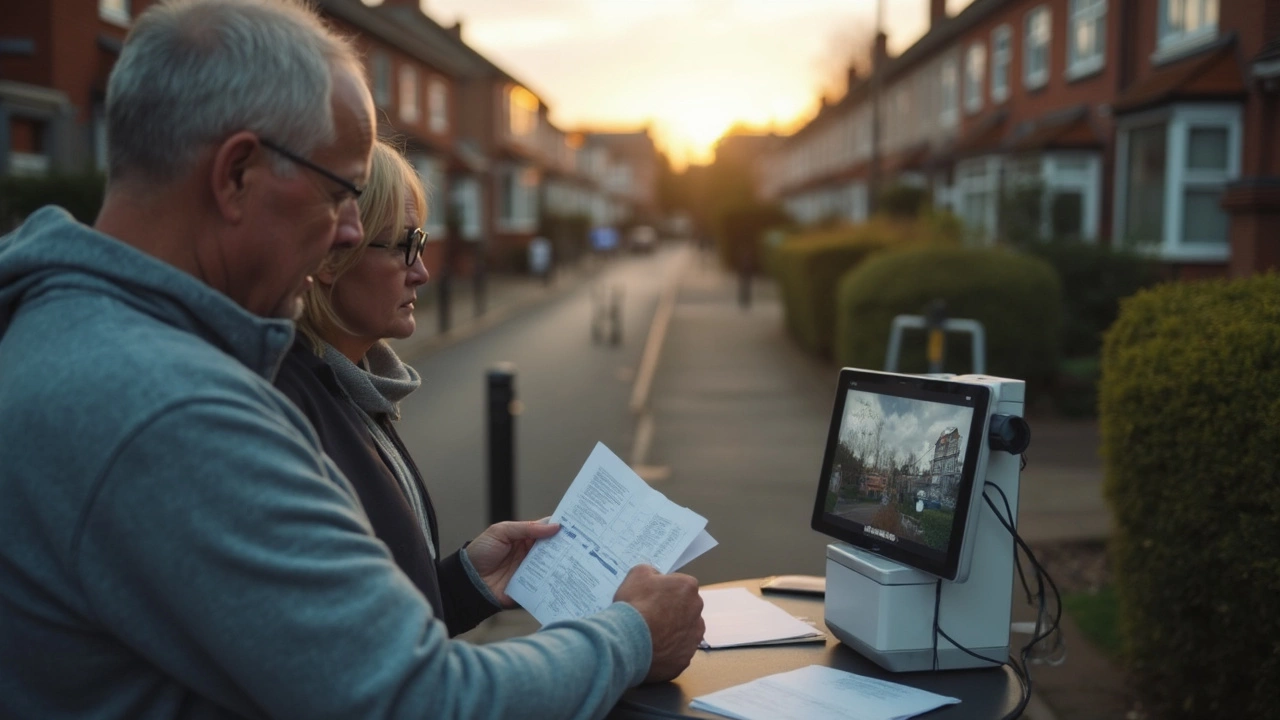If you want to see what’s happening around your house after the sun goes down, outdoor CCTV is the go‑to solution. It’s not just about fancy gadgets – the right camera can stop a break‑in, give you peace of mind and even lower insurance costs. Below you’ll find straight‑forward advice on choosing the best camera, where to mount it, and how to keep it running without headaches.
First off, think about what you actually need. Do you need a camera that watches a wide yard or one that focuses on a single gate? Wide‑angle lenses (120°‑180°) cover large spaces, while a narrow‑focus lens is better for a driveway or front door. Look for a camera with true night vision – infrared LEDs that light up the scene without flashing visible light. Brands that list "IR range 30 m" or more will give you clearer footage after dark.
Next, decide on power. Wired cameras run off the house’s electricity and usually need a backup battery or UPS for power cuts. Battery‑powered models are easier to install but need regular charging. If you live in an area with frequent outages, choose a wired system with a battery reserve or a solar‑panel option.
Finally, check the connection type. Wi‑Fi cameras are cheap and quick to set up, but they can drop signal in thick walls or far‑flung gardens. A PoE (Power over Ethernet) camera uses a single cable for power and data, giving a rock‑solid link and easier troubleshooting. If you’re not sure, a hybrid system – PoE for main zones and Wi‑Fi for the back garden – works well.
Where you put the camera matters more than the camera itself. Aim for spots that see doors, gates, driveways and any blind spots an intruder could use. Mount the camera high enough (6‑8 ft) to avoid tampering but low enough for facial detail. Tilt it slightly downwards – a 30° angle catches the ground and reduces glare from the sky.
Remember privacy laws. In the UK you can’t point cameras directly at neighbors’ windows or public walkways without a good reason. Keep the view focused on your property line and use privacy‑masking features if the camera software offers them.
Weather‑proofing is another must. Look for an IP66 or higher rating – that means dust tight and protected against strong water jets. A simple dome cover can stop rain and dust from getting into the lens, extending the camera’s life.
Once your cameras are installed, connect them to your monitoring app. Most modern systems let you watch live video on your phone, get motion alerts, and store footage either on‑site (SD card) or in the cloud. Set up motion zones so you only get alerts when something actually moves in a critical area, not every leaf blowing by.
Regular maintenance keeps the system reliable. Clean the lens every few months with a soft cloth – dust and spider webs turn clear footage into a blurry mess. Check the power source, replace batteries yearly, and test the recording settings after any firmware update.
In short, pick a camera with good night vision, decide on wired or battery power based on your outage risk, mount it high and angled, respect privacy rules, and keep it clean. Follow these steps and your outdoor CCTV will do exactly what you need – watch, warn and deter – without turning into a tech nightmare.

Thinking about setting up CCTV outside your house? This guide explains what you need to know before you start drilling holes and mounting cameras. Learn about the legal stuff, what systems actually cost, and practical tips for an easy install. There’s a lot more to consider than just pointing a camera at your driveway. This article breaks it all down in plain language, so you avoid common mistakes and useless expenses.